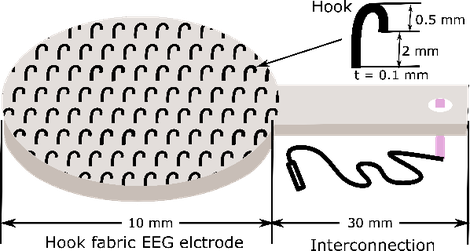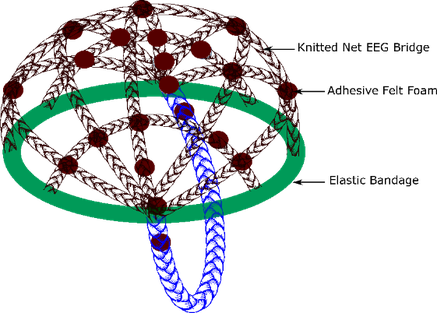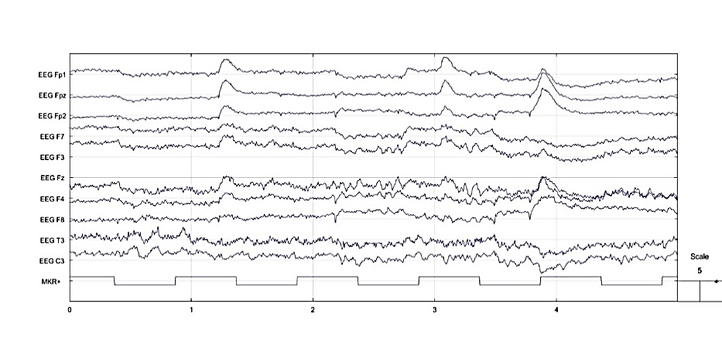Dry EEG textrodes for monitoring brain activity without shaving the head
A hook fabric electrode captures EEG wave qualities that are comparable to commercial dry and standard wet electrodes. The textile-based hook outperforms the commercial dry Ag/AgCl electrode in skin-to-electrode impedance and the standard electrodes in signal-to-noise ratio. The conductive hooks pass through the hair to reach the scalp and entangle it to stay in place. Therefore, neither conductive gel is added nor removing the hair is necessary.
Electroencephalography heavily relies on so-called wet electrodes which require gel application to reduce skin-to-electrode impedance mismatch and skin preparation to operate properly. Skin preparation and gel application are time-consuming when a high number of electrodes are required. Wet electrodes need to be kept “wet” for optimal signal quality making it very time-consuming. Continuous use of wet electrodes would cause skin irritation and leave skin lesions. The application of conductive gel or paste may also cause an allergic reaction in some users. Thus, the demand for more comfortable and user-friendly electrodes has led to the development of an increasing number of dry electrodes that can overcome the limitations of wet electrodes. However, metal-based dry electrodes, are heavier and have a rigid structure which makes them unsuitable for wearable applications, especially when long-term monitoring is needed. This led to the emergence of textile-based dry EEG electrodes.
In this study, a dry EEG electrode was made from a conductive hook fabric (Figure 1a). Its EEG signal quality (Figure 1c) is comparable to that of dry Ag/AgCl comb electrodes and standard wet gold cups. The hook fabric texture avoids the need for adhesive conductive gel, and no hair shaving is necessary. The skin-to-electrode impedance was lower than that of the dry Ag/AgCl comb electrodes. Furthermore, the hook fabric textrode outperformed the standard wet gold cup electrode in terms of signal-to-noise ratio (+4.2%). A knitted net EEG electrode bridge (Figure 1b) that is comparable to universal EEG bridges. The Brain Quick® Clinical EEEG Line was used to test both the hook fabric textrode and the knitted net bridge EEG cap.



Further information
Acknowledgements
We would like to thank NASCERE for the grant that enabled Granch Berhe Tseghai to study this research. Our gratitude also goes to Ingegno Maker Space owner, Dr. Maria-Cristina Ciocci, for providing us with digital fabrication laboratory facilities.
Contact
Prof. dr. ir Lieva Van Langenhove (Lieva.VanLangenhove@ugent.be)